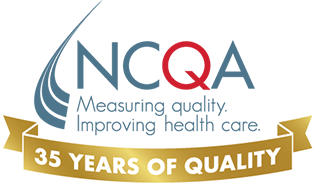All measures on which the organization bases action are included in the scope of a PHQ Survey, including those developed and whose results are calculated as part of a collaborative and those calculated directly by the organization.
NCQA evaluates the organizations activities in one of two ways.
1.Evaluate the collaborative onceif the collaborative opts to undergo a PHQ surveyand apply the survey results to all participants
2.Evaluate the measures, methods and processes of the collaborative when each participant organization is surveyed
The organizations scores on any element are based on the performance of both the collaborative and the organization. The organization must meet the element for all measures, including the collaborative measures it uses. For example, for Element C: Methodology, NCQA evaluates the organizations methodology for each measure directly. It may evaluate the collaboratives methodology either once during a survey of the collaborative or for each organization during the organizations survey. Regardless of the process, all measures must meet the requirements of Element C in order to meet the element.
When a collaborative undergoes a survey directly, the process is streamlined for all involved (the collaborative, the organization and NCQA). In addition, the process may be more cost-effective, since NCQAs pricing is designed to reflect economies of scale.
This applies to the following Programs and Years:
